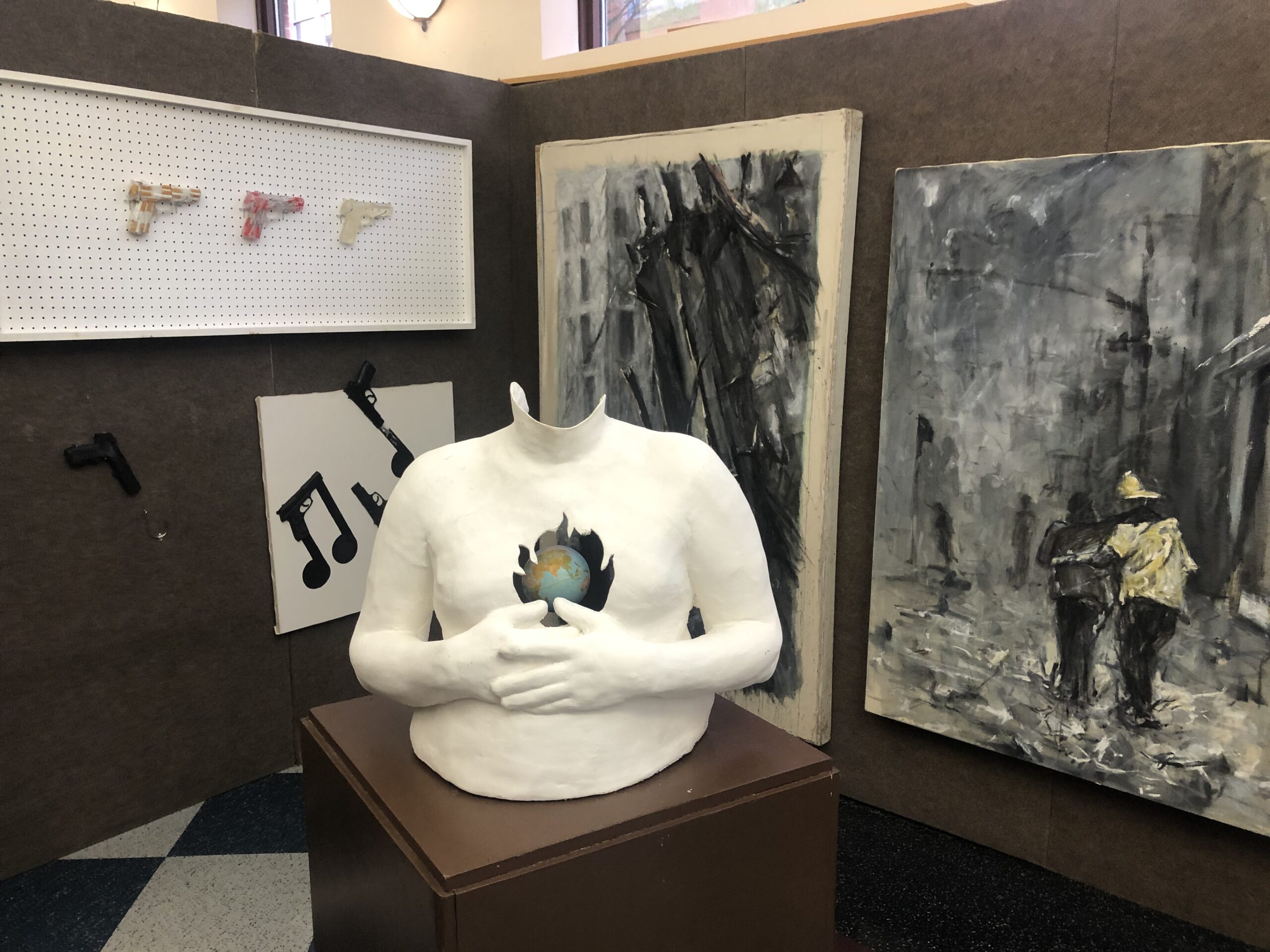Feinstein Campus art exhibit brings new perspective on peace
Pictured artwork from Anthony Tomaselli, Scott Lapham, and Christian Corbat Photo Contributed by: Steven Pennell
An exhibit was recently opened by the Urban Arts and Culture program on the University of Rhode Island’s Feinstein-Providence Campus, entitled “Creating Peace.”
The exhibit aims to address issues “from peace within, to peace with the environment, to the family, the community, the nation, the world.”
Steven Pennell, the exhibit’s curator, chose to involve a broad range of artists, including local artists, URI students and URI alumni. With this broad range of contributions comes an even greater range of representation.
“There are so many different aspects with peace,” Pennell said. “I chose to be broad and let the work speak for itself.”
Upon walking into the exhibit, this objective becomes clear, as the viewer is consumed by a greater organism of artwork. It is evident that great care and attention were put into organizing the space, as its qualities inform the viewer with every available nuance.
The enveloping scene that stands before the subject is interactive to the extent that it suggests conversation, a conversation not only on interpretational levels but with the actual art itself.
Pennell described the exhibit as “an intense space.” This intensity is the sort of aesthetic that pushes the art and its artistry to its full potential. The curative vision behind the exhibit is active and refreshing and brings about thematic suggestions on a larger scale. In other words, the exhibit is interactive – it reaches out and touches its viewers, asking them for inflection and change.
Change: this word is in fact the key to much of the art which is included, and reminds us of the title and thesis of the exhibit: “Creating Peace.” A title that was specifically chosen to incorporate the viewer into the art. From pieces that focus on experience, perspective and physiology to representations of trauma, tragedy and institution, the exhibit encompasses many topics and displays diverse perspectives.
One particularly notable artist, Jonathan Gershon Stark, contributed work from a series entitled “Through Me.” Stark’s work, which depicts Security guards in uniform and casual attire, is precise and metaphysical.
“What is really important to me is respecting everyone’s identity,” Stark said. “Identity is the beginning of freedom [and] freedom, essentially, is peace.”
This perspective is reinforced by the art itself, as it seeks to tell a story and operate within the collective consciousness, animating the art and giving it a quality of liveliness.
This care and attention to nuance are essential to the greater idea of freedom and peace which is represented in Providence.
“Through Me” is a multimodal piece, as it includes visual content which is accompanied by prose that depicts internal dialogue. The greater themes of the piece stress awareness of the interpersonal qualities of life.
“If someone looks at [this work], it will affect them the next time they walk in a building and see someone in a security guard uniform,” Stark said.
This directive is both focused and noble in its appeal to the greater intentions of art as purposeful practice. Stark explained that he wishes for art to “resonate emotionally, socially, and politically with the viewer, and cause them to have a shift in perception or attitude.”
Stark also said that he hopes his work is successful in making change for the better – a large part of why he is an artist to begin with. This sentiment perfectly encapsulates the exhibit’s cornerstone: art should, ultimately, be poignant and didactic.
Pennell develops this idea in his mission as a coordinator.
“As a major university, these kinds of difficult conversations can and must be had,” Pennell said.
The fact that this narrative is expressed in the format of such specific, individual representation is reassuring of the future of artistry and its community in Rhode Island. The exhibit tells us that the words of an individual’s experiences – their perspective, their ability to present and, in effect, live – are paramount.
The potency of this exhibit is remarkable and justifies a visit if given the opportunity. The exhibit is available from Sep. 6 through the 29, as well as virtually (beyond these dates), and is located at the URI Feinstein-Providence Campus lobby gallery.

